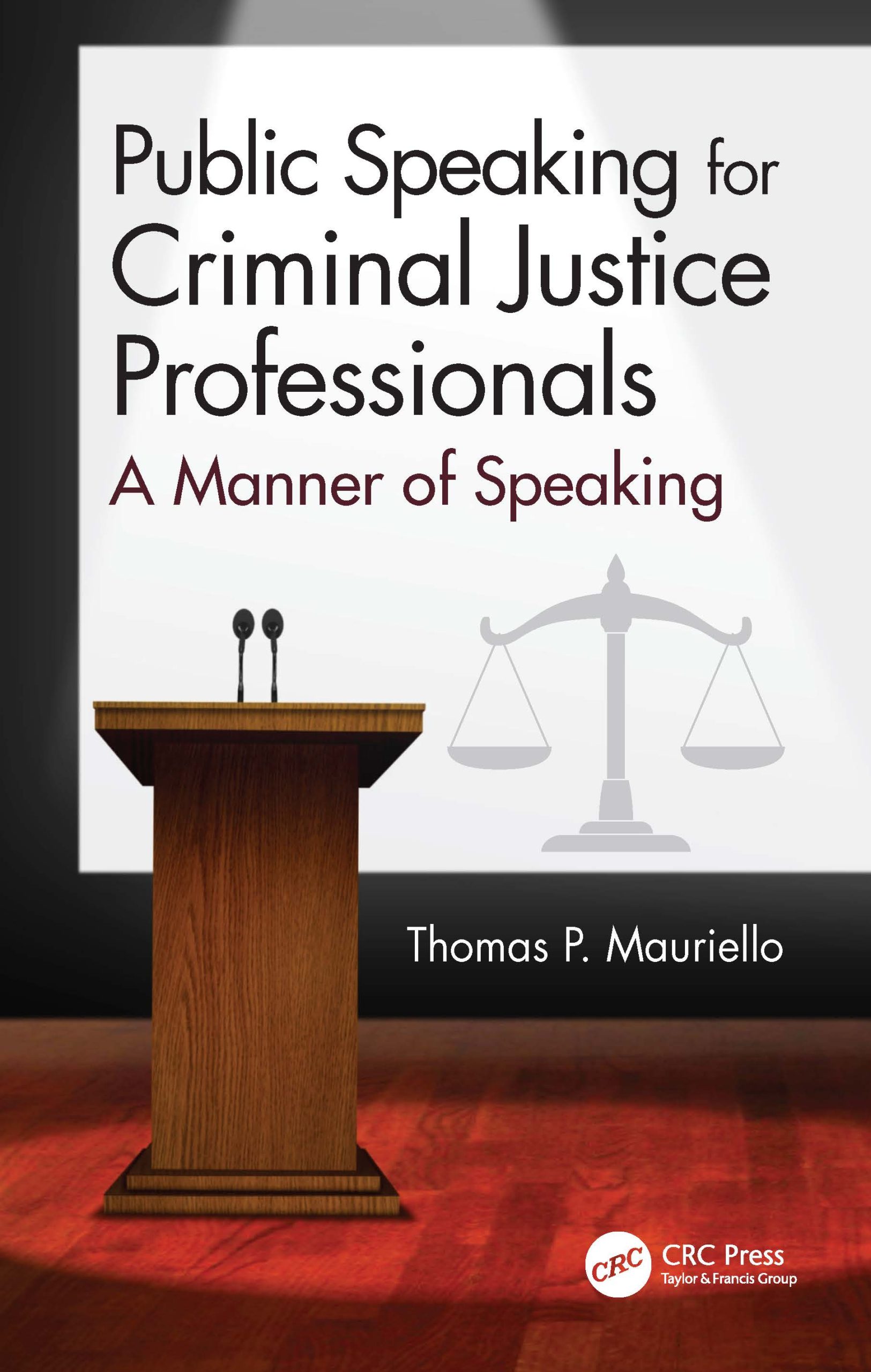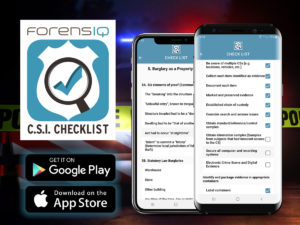ForensicWeek.com – Discusses Campus Law Enforcement
ForensicWeek.com – sponsored by ForensIQ, Inc. is airing Episode 61 this Thursday, May 15th at 7:00 P.M. (EST). The topic for discussion – “Campus Law Enforcement – The Mission and Profession,” with guests Chief David Perry, Florida State University Police Department (PD) and President-Elect of the International Association of Campus Law Enforcement Administrators (IACLEA); Chris Blake – Chief Staff Officer for the IACLEA; Chief Larry Volz, University of the District of Columbia PD; and Captain Robert Mueck, University of Maryland PD. Learn about the role campus law enforcement plays in keeping our campuses safe and secure, as well as maintaining order to foster a positive environment for knowledge, research and learning. Join host, Tom Mauriello and his distinguished guests LIVE and archived on www.ForensicWeek.com. Thank you for watching!
Want to wear logo apparel with ForensicWeek.com, ForensIQ or UM-CCJS logos, then go to http://forensiq-inc.com/store/ and select from the ForensIQ Online Store.
University of Mississippi Forensic Chemistry Honored as Leading National Program
ForensicColleges.com has named the forensic chemistry program at the University of Mississippi one of the finest in the nation. U.S. News and World Report comprehensive surveys, reputation among professionals and peers, and cost and opportunities for experience rank the Forensic Chemistry program in the top 13. UM’s forensic chemistry program is the only one in the state and among only three forensic chemistry programs in the south and six nationally accredited by the Forensic Science Educations Programs Accreditation Commission.
The UM forensic chemistry program contains a demanding science-based curriculum that prepares graduates for versatile careers in forensics laboratories. Although the University of Mississippi only offers a B.S. in forensic chemistry, a major difference that sets this program aside from all others is that all students in the program are enrolled in a summer internship with a local criminal laboratory. Because of the hands-on experience, more than 70% of graduates find employment upon graduation, many of them working in local and federal crime labs.
Want to read more? Click here to view the entire article!
Source: University of Mississippi News
[Abstract written by Noel Andres, ForensIQ Intern, 5/8/14]
Lab Uses Wrong Chemical in 2,500 Methamphetamine Test in Santa Clara County
Earlier this year Mark Burry, crime analyst at Santa Clara County Lab, used the wrong chemical to conduct preliminary methamphetamine tests on the blood samples of 2,500 arrestees.
In January, Burry apparently grabbed the wrong solution off a shelf and loaded a machine with a more sensitive compound. Another analyst discovered the mistake in March and after retesting the samples, only seven tests had shown a false positive. Fortunately no one is in custody because of a mistaken test. The Santa Clara County Lab is taking extra precautions to better label it chemicals and is conducting a wholesale review of procedures.
Because of his mistake, Mark Burry is no longer assigned to drug testing at Santa Clara County Crime Lab. District Attorney Jess Rosen stated, “Human error will always exist within the criminal justice system; however, it is vital that we quickly find any mistakes and quickly fix them. We did that in this case.”
Interested in reading more? Click here to view the entire article!
Source: San Jose Mercury News
[Abstract written by Noel Andres, ForensIQ Intern, 5/8/14]
“Shooting Reconstruction: The 4 Elements of Trajectory” – Free Online Course
RTI International will be holding a free online course on Thursday May 22 at 1pm Eastern time. This course is called “Shooting Reconstruction: The 4 Elements of Trajectory”. It will be presented by Aaron Brudenell and will be approximately 70 minutes. He will discuss how the path of a bullet hole has 4 main elements that require measurement, estimation, or other determination where possible. This introduction to shooting reconstruction course will address these four elements independently and then assessed as a group in examples and case studies.
RTI International also offers free archived training that can be viewed at anytime.
Click here to register!
Click here to view free archived training
Source: RTI International
[Abstract written by Alicia Terrell, ForensIQ Intern, 050814]
Obliterated Serial Numbers in Firearms
A report released by The National Institute of Justice gives a different way to detect compromised serial numbers on firearms. The two most used ways for restoring serial numbers is MPI and chemical etching. These technologies were compared to magneto optical (MO) sensor technology. This comparison revealed that MO sensor technology is a viable and reliable serial number restoration technique. This technique doesn’t damage the sample. Its also safe to use and easy. Also compared to the other technologies it did better in sensitivity, specificity, accuracy, and precision. The MO sensor technology works with multiple layers called wafers. It works by passing polarized light from a light source under influence of an external magnetic field. The light is reflected by the mirror layer after crossing the MO active film (layer). An analyzer eliminates all non‐altered components of the mirrored light beam. The result is a colored image of all magnetic fields over the sensor area where a camera records the image. The draw back of this technology is that it can only be used on flat surfaces and it is more expensive. But because of its positives it can be used as a fall back plan to investigators.
Click here for full article
Click here to read report
Source: Forensic Magazine
[Abstract written by Alicia Terrell, ForensIQ Intern, 050814]
Back to the Basics: Effectively Sketching a Crime Scene
There are numerous pieces of equipment and types of technology that can be used to diagram and map crime scenes. However, it is always good to be able to sketch a scene by hand if necessary. This article provides various tips, guidelines, and pointers, as well as diagrams that can help you sketch a scene effectively and accurately. These tips focus heavily on taking accurate measurements and four basic techniques that can be used to measure a scene.
Click here to read the full article.
[Abstract Written by Walter Tates, ForensIQ-Inc. Intern, 050814]
Crime Scene Blood Impressions Web Course
Although they are not frequently found at crime scenes, blood impressions can be a very key piece of evidence as it can definitively link a person to a crime scene. Knowing the best way to analyze this type of evidence could be crucial in utilizing this type of evidence in the most effective way possible. RTI International is offering a free, on demand presentation of a webinar titled Florescence of Blood Impressions with Acid Yellow. The webinar is 90 minutes long and provides step by step demonstration and discussion, instructing on the use of acid yellow 7 for blood impressions.
Click here to register for the course.
[Abstract Written by Walter Tates, ForensIQ-Inc. Intern, 050814]
The ForensicWeek.com Show – “Cybercrime: Unraveling the Human Component” – Episode 60
Want to wear logo apparel with ForensicWeek.com, ForensIQ or UM-CCJS logos, then go to http://forensiq-inc.com/store/ and select from the ForensIQ Online Store.
The National Institute of Standards and Technology Seeks Applicants to Join Forensic Science Committees
The National Institute of Standards and Technology (NIST) is accepting applications from members of the forensic science, criminal justice, and academic research communities to serve on the Organization of Scientific Area Committees (OSAC). The OSAC, which will include a Forensic Science Standards Board, three resource committees, five scientific area committees, and twenty-three discipline-specific committees, will seek to develop national standards and guidelines for forensic science practitioners throughout the United States. The OSAC’s findings and publications, which will provide standards and guidelines to improve quality and consistency in forensic science, will be available to the public free of cost.
Only 400 applications have been received since the process opened on April 11, 2014 and the NIST needs approximately 600 experts to fill the open positions. If you are interested please review the roles and responsibilities for each membership category of OSAC and apply for membership. Applications are due 11:59 PM EDT, Sunday, May 11, 2014!
Click here for more information about the NIST and OSAC!
Click here to view the online application!
Source: The National Institute of Standards and Technology (NIST)
[Abstract written by Noel Andres, ForensIQ Intern, 5/1/2014]
Indiana Proposal Would Require All Arrestees to Provide DNA Samples
Indiana lawmakers are making an effort to try and pass legislation that would require all arrestees of criminal offenses to provide a DNA sample. A study by Indiana University – Purdue University concluded that DNA collection from all arrested individuals would save Indiana taxpayers approximately $60 million annually.
Requiring all arrested individuals to provide their DNA would expand the database of the Indiana State Police crime lab, helping convict repeat criminal offenders and save in officer response times, and investigations, prosecutions, and court time. The lab collects 18,000 new samples per year and contains more than a quarter of a million DNA samples, which over the past 17 years, has helped law enforcement link nearly 4,200 suspects to crime scenes.
Senator Jim Merritt, states that having all arrestees provide DNA samples for criminal offense can serve as a quality tool, expand the state’s database, and can ultimately play a large role in law enforcement.
Click here to read the full article!
Source: The Indy Channel
[Abstract written by Noel Andres, ForensIQ Intern, 5/1/2014]
Upcoming Technology Assisting in Arson Investigations
When it comes to arson cases, one of the most time consuming processes involved is determining the cause of a deliberately set fire. University of Alberta researcher James Harynuk and Royal Canadian Mounted Police scientist Mark Sandercock are taking steps towards simplifying this process by teaming up to develop a computer program that can sort through the chemical clues left behind by arson. Using gasoline chemical samples from 232 samples drawn from fire debris in cases under investigation in Canada, a filter was developed that isolated the signature of gasoline and was used to determine the presence of gasoline in the debris sample, and thus indicate if it could have been the source, or one of the sources, of the fire. Sandercock stated that “By getting the laboratory results back quickly, investigators can use this information to ask the right questions when interviewing people or evaluating other evidence, which will help them resolve the case more quickly by pointing them in the right direction.” The program has yet to be given a name but is currently in the process of gathering support for commercialization as well as testing on other less common flammable fluids.
Read the full article here.
[Abstract Written by Walter Tates, Forens-IQ Inc. Intern, 050114]
Prosecution from Gun Buyback
There has been concern around endangering the anonymity factor in the gun buyback program. After Boston’s buyback multiple investigations are underway by police after guns turned in were suspected of being used in possible crimes. The spokesman for the Boston Police Department has stated “The success of the gun buyback isn’t measured in the number of arrests made or cases successfully prosecuted. It’s about getting guns off the streets and making our community safer.” More than 270 guns have been turned in to police. The mayors office stated participants giving guns will not be prosecuted for unlawful possession but their guns will be tested to determine if they were used in crimes. This could cause potential problems for some and deter others from wanting to participate.
Click here for full article
Click here to see below blog item where ForensIQ’s, Tom Mauriello comments on an ABC TV News story discussing this same issue.
Source: Boston Herald
[Abstract written by Alicia Terrell, ForensIQ Intern, 050114]
Gun Buy-back Programs – Do they Stop Crime or Reduce Accidental Deaths?
See this piece on ABC News, WMAR Channel 2 Baltimore, where Tom Mauriello, ForensIQ and University of Maryland Professor comments on gun buy-back programs and how they reduce accidental deaths more than crime.
Criminology Buffs Club At The University of Colorado Gives Students A Glimpse Of The Criminal Justice World
In the fall of 2012, students and faculty at University of Colorado formed the Criminology Buffs Club in order to inform students about the different career paths and opportunities in the field of criminal justice. Television shows and movies about crime scene investigation and law enforcement officers have given the public an inaccurate image of what goes on in the world of criminal justice. The goal of the 32-member Criminology Buff Club is to dispel some of these myths and provide students with a real-life understanding of the criminal legal system.
On April 7,2014 the Criminology Buffs Club hosted a Crime Scene Investigation competition for the students on the University Campus. The student teams were tasked with correctly and accurately collecting evidence from the staged scene as part of the event. The purpose the club’s organized events is to give students exposure to working professionals in the field of criminal justice and to give them real-life insight of what the duties of these professionals consist of.
Aside from the CSI competition, the Criminology Buffs Club additionally organizes multiple discussion panels for students interested in careers in Juvenile Justice, Criminal Justice, and Law Enforcement. Although students participating in these events may not investigate homicides or become criminologist in the future, the Criminology Buffs Club will continue to provide information about career options for these students.
Source: Daily Camera
[Abstract written by Noel Andres, ForensIQ Student Intern, 4/17/14]
Forensic Class at Boy’s Latin School of Maryland Uses Maggots For Criminal Investigation
With talented faculty alongside, students at the Boy’s Latin School of Maryland learn the core values of courage, integrity and compassion while striving for academic and personal excellence. Jim Haluck, instructor of an honors forensic course at The Boy’s Latino School of Maryland, helps students examine the scientific techniques used by criminal investigators in the laboratory to solve crimes.
A new lab entitled Sarcophaga bullata, which deals with meat and maggots in an attempt to determine if drugs were used by a deceased human body, has recently made the news in the forensic world. Instructor Haluck explained, “The boys in honors forensic sciences are loading their test tubes with drug laced ground beef and larvae of Sarcophaga bullata flies. These flies lay eggs on deceased humans and can be used to determine time of death and any drug use by the deceased individual. After about three days of feeding on the drug-laced meat, the boys will extract the maggots and grind them to prepare their body fluids for thin-layered chromatography analysis. The samples taken from maggots will be compared to reference drug Rf values for identification.”
The forensic class at the Boy’s Latin School of Maryland places the students into the shoes of forensic entomologist, helping them obtain a better understanding of the work these professional provide to the field of forensic science.
Click here to read more about the Boy’s Latin School of Maryland and the Forensic Class!
Source: The Boys’ Latin School of Maryland
[Abstract written by Noel Andres, ForensIQ Intern, 4/17/14]






